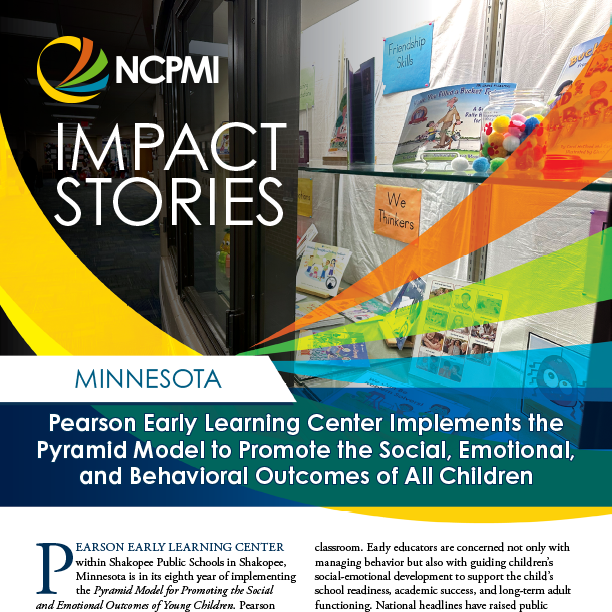
Pearson Early Learning Center Implements the Pyramid Model to Promote the Social, Emotional, and Behavioral Outcomes of All Children (Shakopee Public Schools | Shakopee, Minnesota)
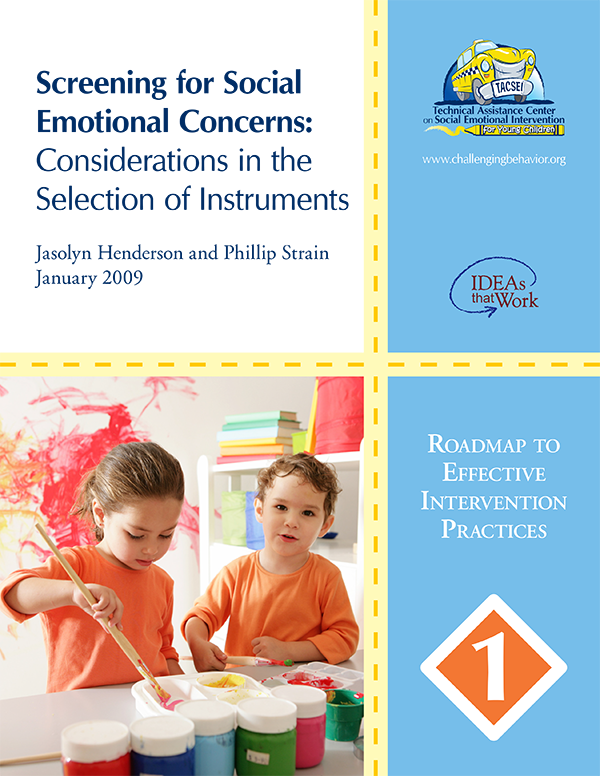
This Roadmap provides a brief overview of the use of screening and to help administrators and teachers choose appropriate instruments for implementing a screening program.
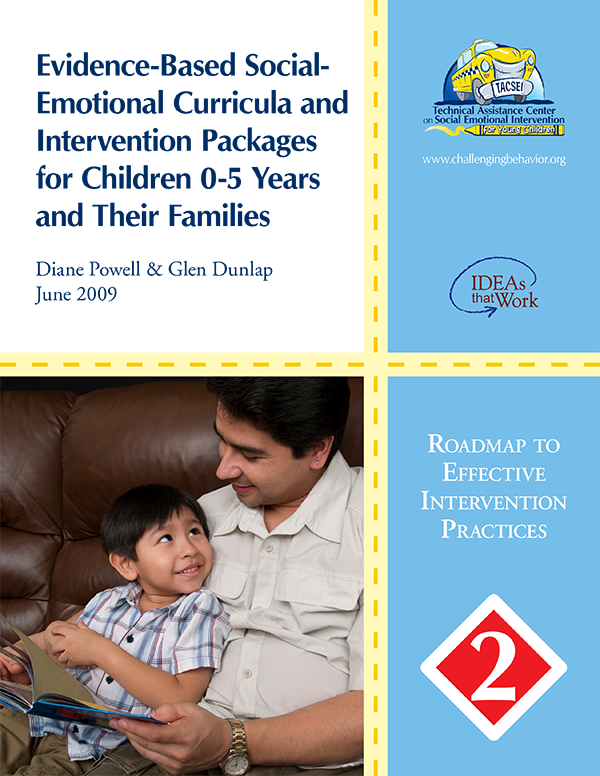
This Roadmap provides guidance on promoting healthy social-emotional development in all young children and intervening early with children who may be displaying problematic social-emotional behaviors.
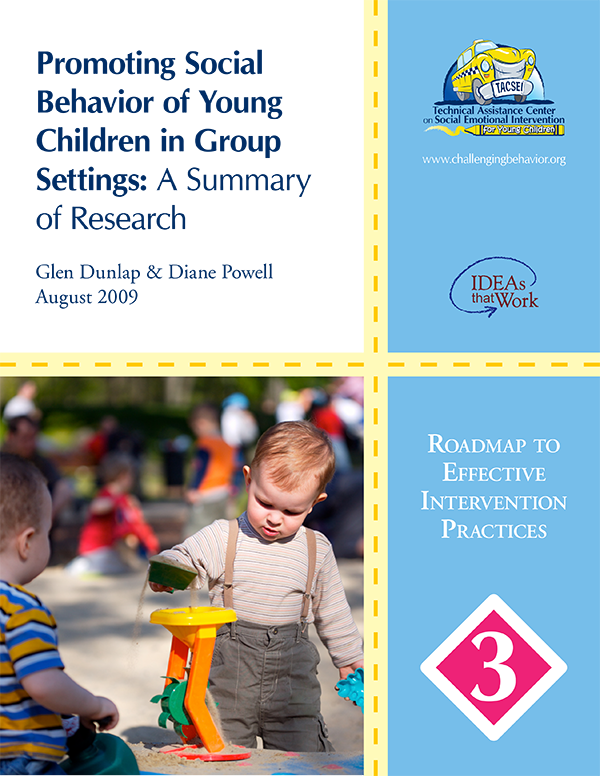
This Roadmap shares practices for promoting adaptive social-emotional behavior of toddlers and preschoolers, with or at risk for disabilities and who have problems with behavior, in group settings.

This Roadmap describes the types of TA that are most beneficial for achieving positive outcomes. It highlights TA strategies to initiate, implement, and sustain effective practice and systems change.

This Roadmap discusses family-focused services and practices for promoting social-emotional development of children served in Part C.

This Roadmap is a guide to implementing widespread use of the Pyramid Model.

This Roadmap provides programs with guidance on how to collect and use data to ensure the implementation of the Pyramid Model with fidelity and decision-making that improves positive child outcomes.
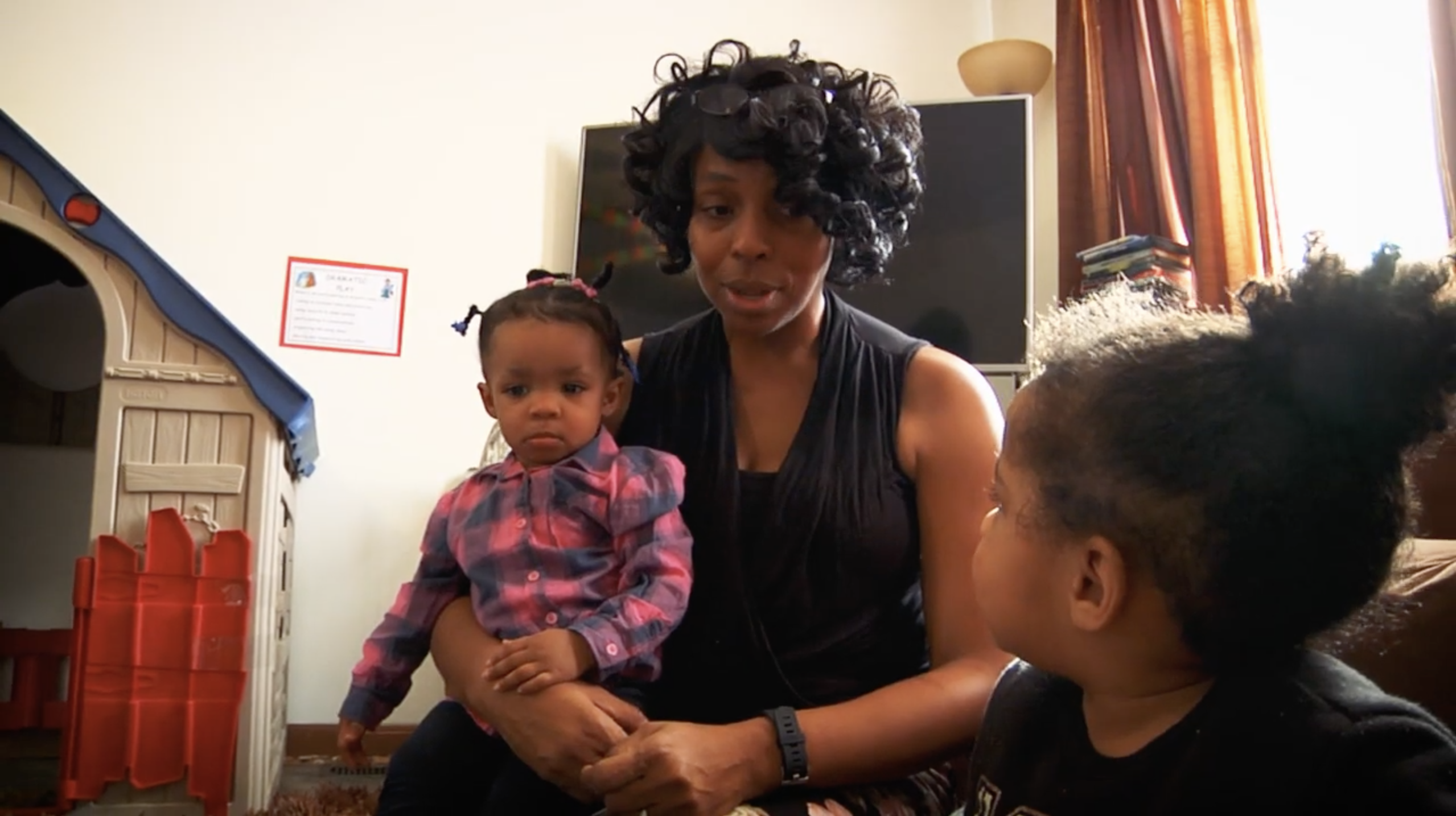
Learn about how the Pyramid Model is implemented in Family Child Care Homes. This brief video provides an introduction to the Pyramid Model tiers and practices.

Learn about how the Pyramid Model is implemented in Family Child Care Homes. This brief video provides an introduction to the Pyramid Model tiers and practices. (Turn on Spanish closed captions for translation of provider interviews.)

Pyramid Model Classroom Coach Raquel Lima describes children’s positive outcomes after implementing the Pyramid Model.

Pyramid Model Classroom Coach Raquel Lima describes children’s positive outcomes after implementing the Pyramid Model.

Pyramid Model Classroom Coach Raquel Lima describes positive outcomes for classroom teachers after Pyramid Model implementation.

Pyramid Model Classroom Coach Raquel Lima describes positive outcomes for classroom teachers after Pyramid Model implementation.
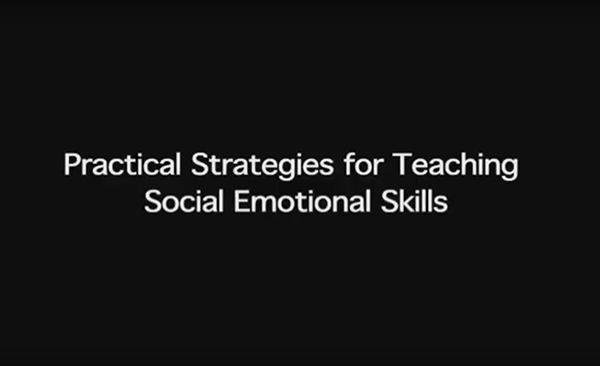
This 28-minute video highlights strategies and approaches that early childhood personnel and families can use to systematically target social-emotional supports that build young children?s skills in a variety of areas including making friends, problem solving, asking an adult for help, talking about feelings, and managing their emotions. The strategies rely on a 3-stage approach to supporting young children’s social-emotional development by (1) introducing and practicing a skill, (2) building fluency and competency with a skill, and (3) ensuring there is maintenance of a skill. The video provides multiple examples of early childhood personnel demonstrating how to introduce a skill using a variety of tools, practice a skill through planned and unscripted activities, and maintain the skill by recognizing children for using the skill on their own.?

This 28-minute video highlights strategies and approaches that early childhood personnel and families can use to systematically target social-emotional supports that build young children’s skills in a variety of areas including making friends, problem solving, asking an adult for help, talking about feelings, and managing their emotions. The strategies rely on a 3-stage approach to supporting young children’s social-emotional development by (1) introducing and practicing a skill, (2) building fluency and competency with a skill, and (3) ensuring there is maintenance of a skill. The video provides multiple examples of early childhood personnel demonstrating how to introduce a skill using a variety of tools, practice a skill through planned and unscripted activities, and maintain the skill by recognizing children for using the skill on their own.

This video was designed to provide a foundation for understanding the Pyramid Model as a framework for promoting young children?s social and emotional development and preventing and addressing challenging behavior. This video is a perfect way to be introduced to and become familiar with the Pyramid Model framework and is available with both English and Spanish open captioning. (26 min)

This video was designed to provide a foundation for understanding the Pyramid Model as a framework for promoting young children?s social and emotional development and preventing and addressing challenging behavior. This video is a perfect way to be introduced to and become familiar with the Pyramid Model framework and is available with both English and Spanish open captioning. (26 min)
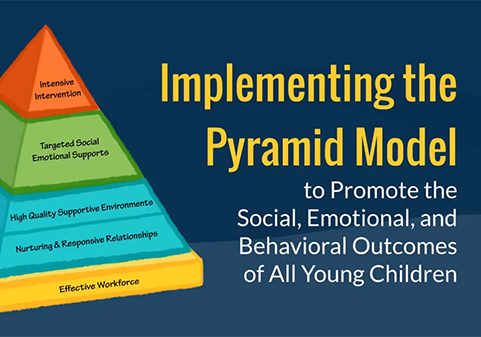
The Pyramid Model for Promoting Social Emotional Competence in Infants and Young Children (Pyramid Model) is a conceptual framework of evidence-based practices for promoting young children’s healthy social and emotional development. This video provides an overview of the structure and levels of support.

The Pyramid Model for Promoting Social Emotional Competence in Infants and Young Children (Pyramid Model) is a conceptual framework of evidence-based practices for promoting young children’s healthy social and emotional development. This video provides an overview of the structure and levels of support.

Dr. Marilyn Torley, Principal at Clifton Early Learning Academy gives a heartfelt explanation of what she is most proud of now that her program implements the Pyramid Model.

Dr. Marilyn Torley, Principal at Clifton Early Learning Academy gives a heartfelt explanation of what she is most proud of now that her program implements the Pyramid Model.

In this article we look at the secondary level of the teaching pyramid, which emphasizes planned instruction on specific social and emotional skills for children at risk for developing more challenging behavior, such as severe aggression, property destruction, noncompliance, or withdrawal. Children who may be considered at risk for challenging behavior are persistently noncompliant, have difficulty regulating their emotions, do not easily form relationships with adults and other children, have difficulty engaging in learning activities, and are perceived by teachers as being likely to develop more intractable behavior problems. (Published in Young Children, November 2006)
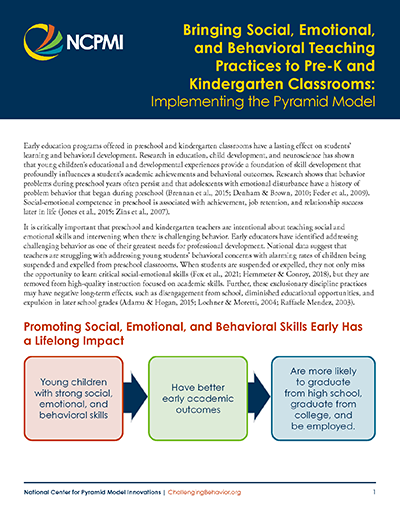
A brief that describes the research supporting the implementation of Pyramid Model practices in preschool and kindergarten classrooms.
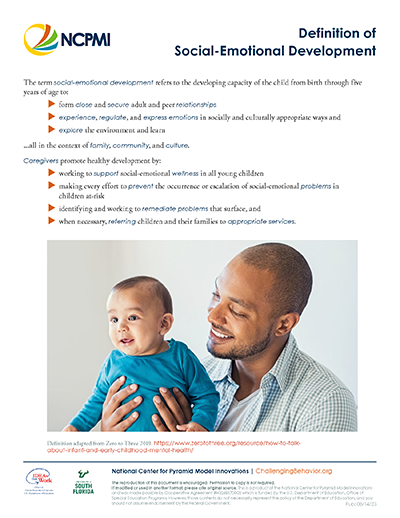
This fact sheet reviews the definition of social-emotional development.
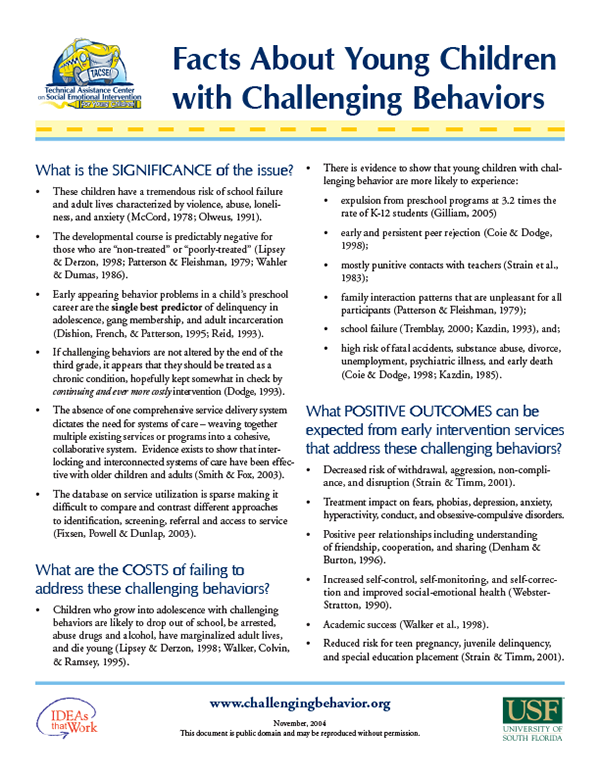
Young children with challenging behavior have a significant risk of continued problems, school failure, and social adjustment problems. This fact sheet provides a summary of the research on the significance of the issue, the social costs associated with young children who have challenging behavior, and the importance of early intervention.
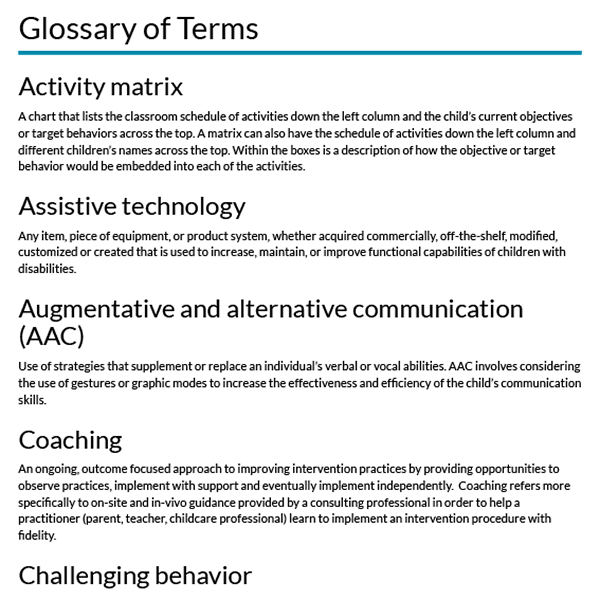
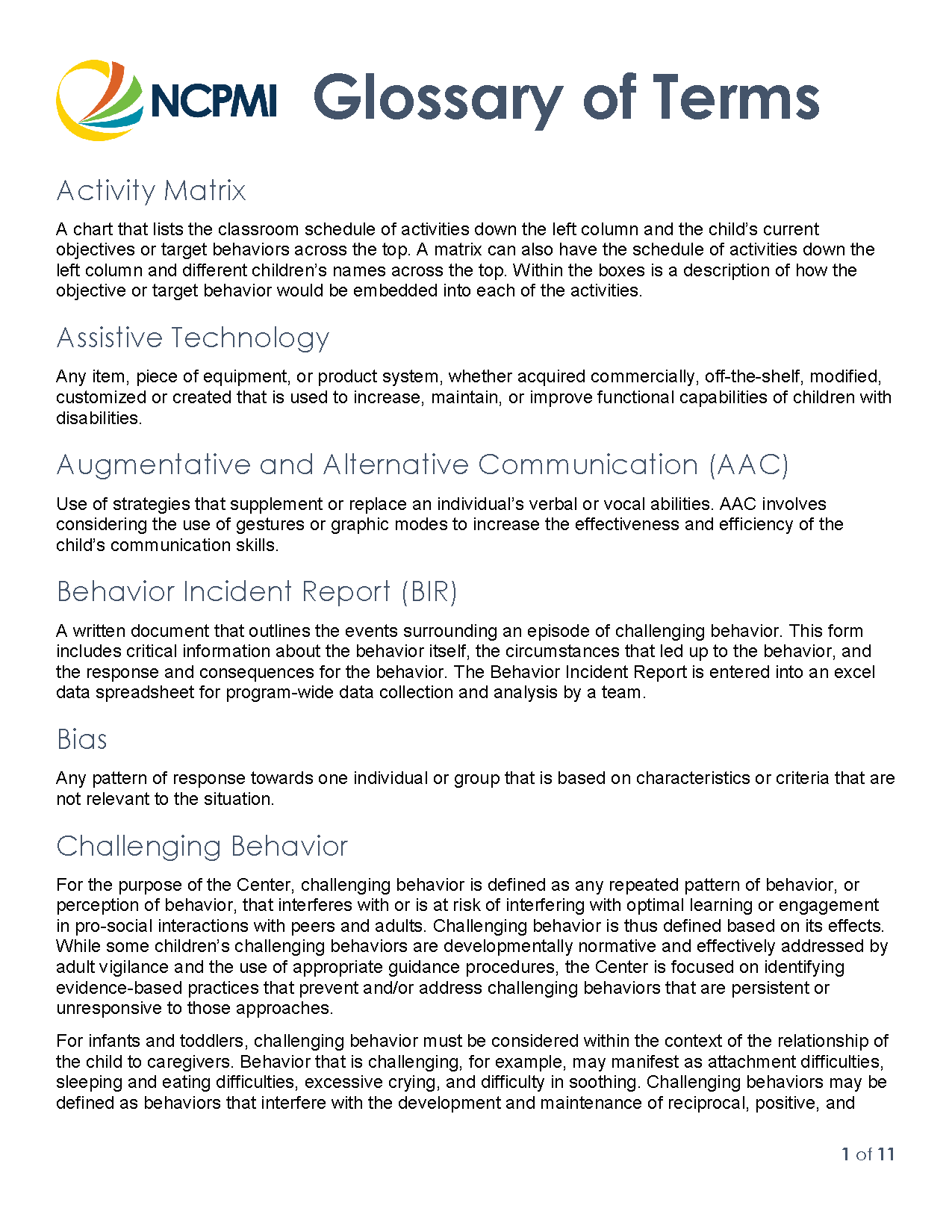
Glossary of terms used on web site
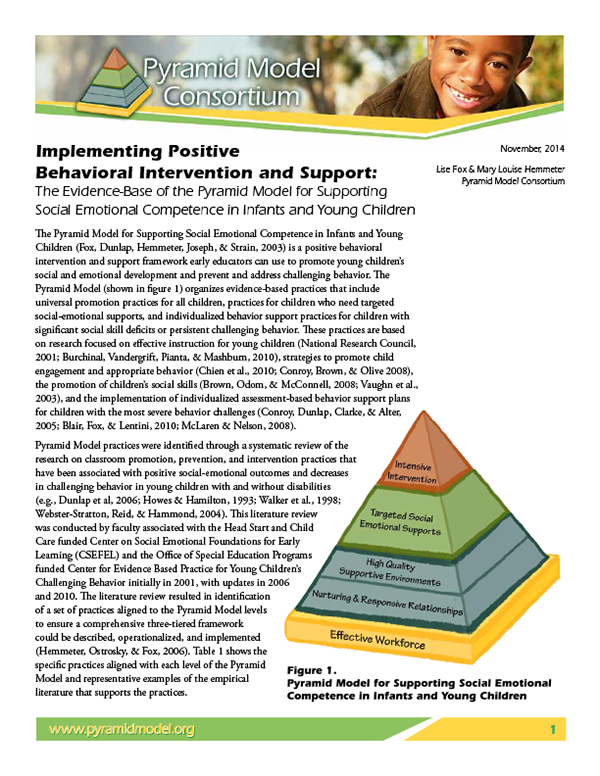
This document offers a brief overview on the development of the Pyramid Model and discusses the evidence for the Pyramid Model practices.

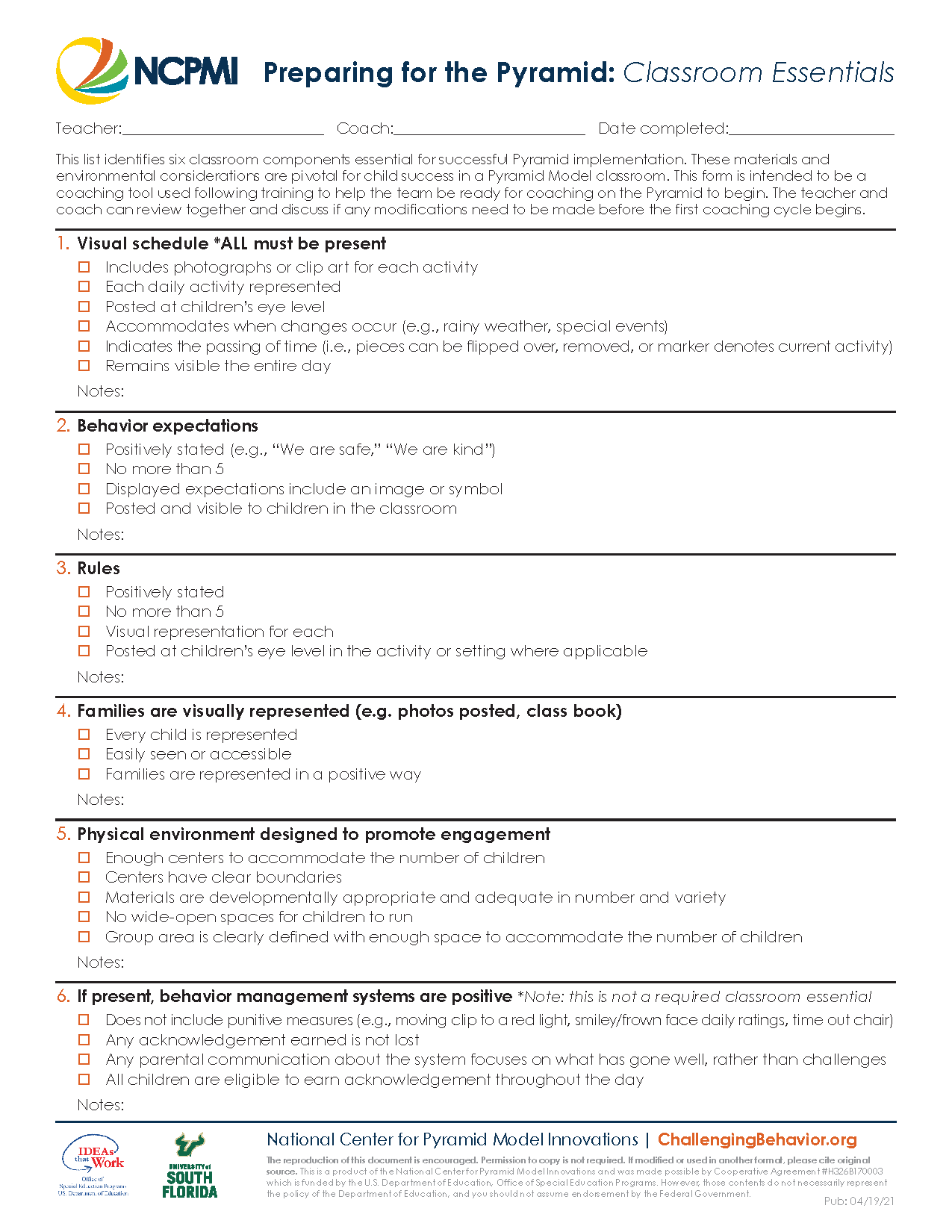
This list identifies five classroom components essential for successful Pyramid implementation. These materials and environmental considerations are pivotal for child success in a Pyramid Model classroom. This form is intended to be a coaching tool used following training to help the team be ready for coaching on the Pyramid to begin. The teacher and coach can review together and discuss if any modifications need to be made before the first coaching cycle begins.

This list identifies five classroom components essential for successful Pyramid implementation. These materials and environmental considerations are pivotal for child success in a Pyramid Model classroom. This form is intended to be a coaching tool used following training to help the team be ready for coaching on the Pyramid to begin. The teacher and coach can review together and discuss if any modifications need to be made before the first coaching cycle begins.

Poster displaying Pyramid Model commitments to equity, inclusion, belonging, and celebration of diversity.
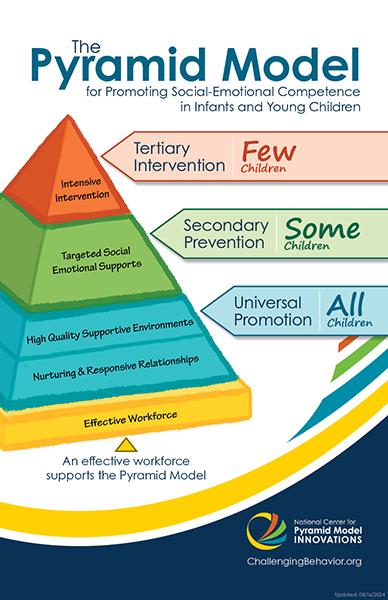
Print and post this poster in your classroom or program.

This Handout illustrates the various levels of the Pyramid Model in a format that is easy to print and ideal for distribution.
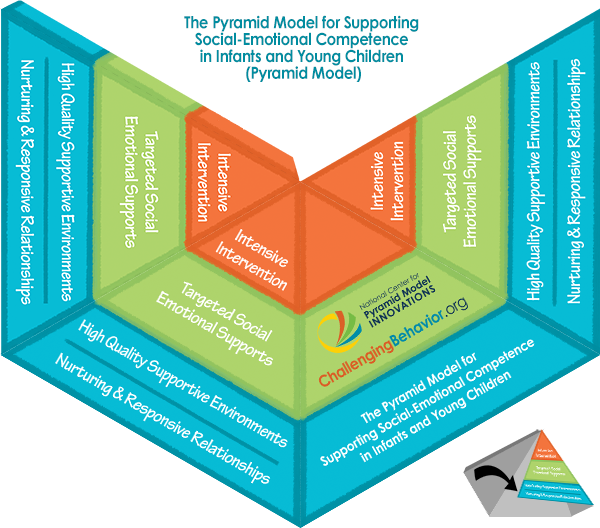
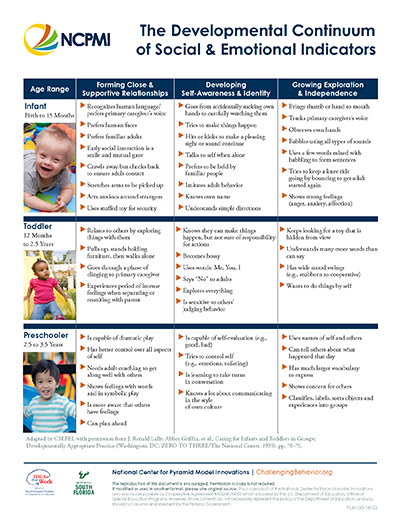
This one page fact sheet contains the developmental continuum of social and emotional indicators for infant, toddler, and preschool age children.

This four-page fact sheet provides an overview of the Pyramid Model for Supporting Social-Emotional Competence in Infants and Young Children. Specifically, this fact sheet describes the three tiers of intervention practice: universal promotion for all children; secondary preventions to address the intervention needs for children at risk of social-emotional delays, and tertiary interventions needed for children with persistent challenges. Additionally, six key assumptions that were made during the design process about how the Pyramid Model would be implemented are outlined.
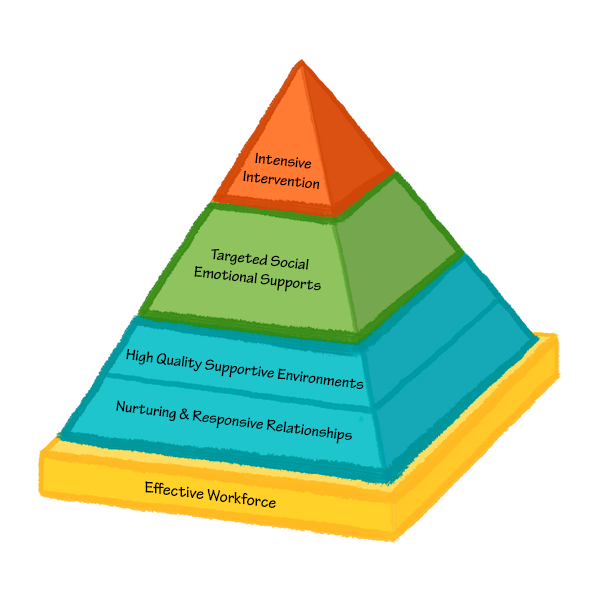
This image of the Pyramid Model framework can be used as a visual support, or incorporated into presentations, websites, and other materials for educational purposes.
Please cite the as follows:
Pyramid Model for Promoting Social and Emotional Competence in Infants and Young Children. From National Center for Pyramid Model Innovations at the University of South Florida, www.challengingbehavior.org. Reprinted with permission.
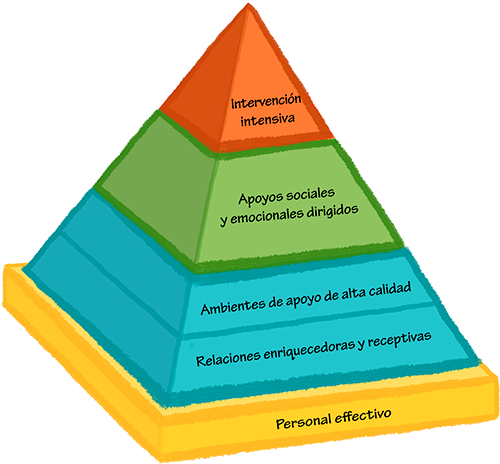
This image of the Pyramid Model framework can be used as a visual support, or incorporated into presentations, websites, and other materials for educational purposes.
Please cite the as follows:
Pyramid Model for Promoting Social and Emotional Competence in Infants and Young Children. From National Center for Pyramid Model Innovations at the University of South Florida, www.challengingbehavior.org. Reprinted with permission.
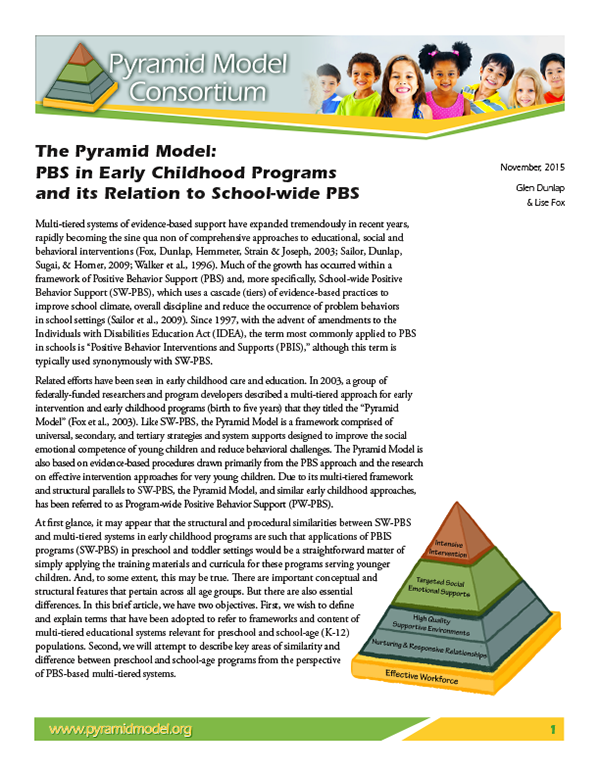
A brief article that defines and explains terms related to Positive Behavior Support (PBS), Positive Behavioral Interventions and Supports (PBIS), and the Pyramid Model and a discussion of the key areas of similarity and difference between preschool and school-age implementation of a PBS-based multi-tiered systems.
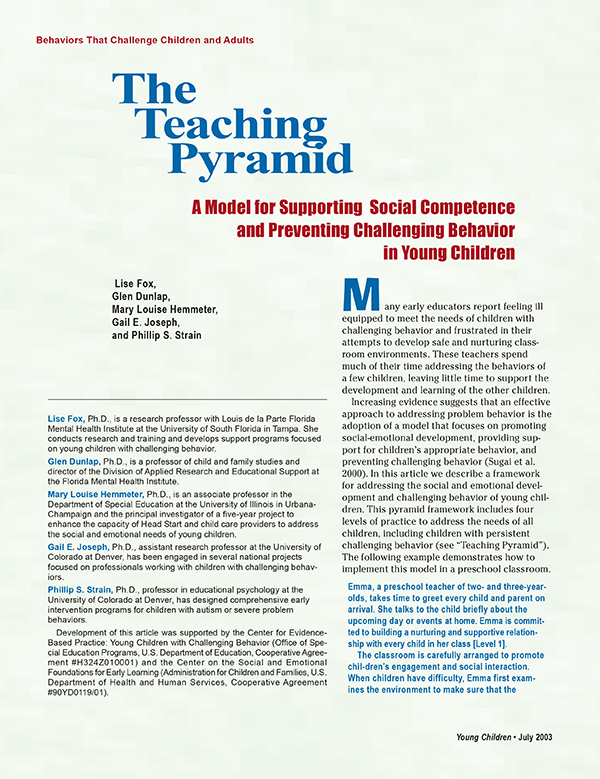
This article describes a conceptual framework for change that guides the work of TACSEI. Specifically, this model maps out how to proceed in a systematic fashion and helps us decide where immediate attention is it most necessary regarding children’s social emotional issues and challenging behavior. (Published in Young Children, July 2003)



